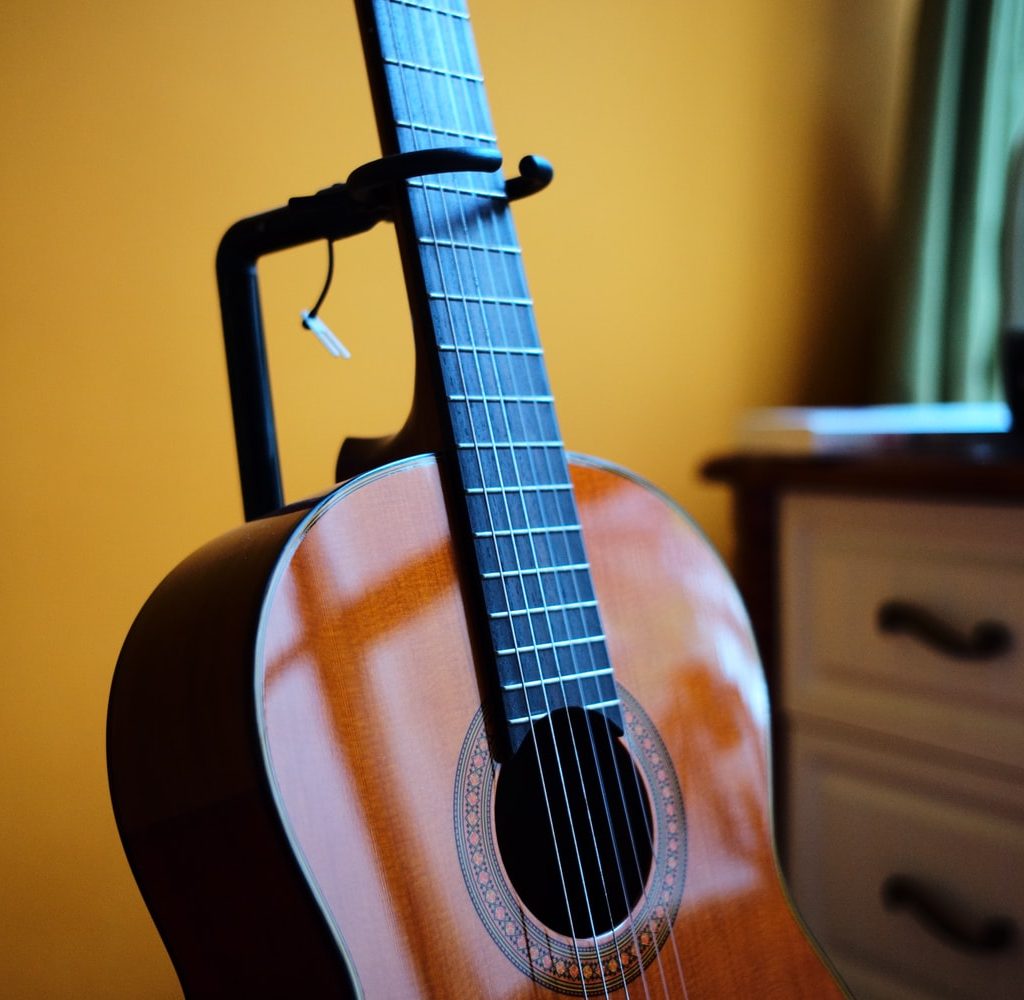Guitars can have any number of strings from 4 to 8, depending on the type of guitar it is. For most guitars (that are not bass guitars), the most popular number of strings is 6. So what notes are these six guitar strings? Let’s find out.
Guitars with six strings are numbered 1 to 6 with one being the thinnest string and 6 being the thickest. The note of each string is determined by something called an “open string”.

Table of Contents
What Is An Open String?
Basically, an open string refers to the sound that is produced by a string when it is played openly, that is, without touching the fret. So, from 1 — 6, here are the notes that each open string plays:
E — B — G — D — A — E
1 — 2 — 3 — 4 — 5 — 6
The thickest string, which is the sixth string is referred to as the Low E string, while the thinnest string which is the first string, is referred to as the High E string.
Why Is It Important To Know The Name And Number Of Our Guitar Strings?
The biggest reason why you need to know what each of these strings is meant to be is that sometimes guitarists tune their guitars differently. While most of the time you would get the standard tuning with the notes arranged as we’ve mentioned earlier, it’s not always the case.
If you pick up a guitar with a different kind of tuning or one that has just been restringed, without the knowledge of what this standard tuning is, you won’t be able to tune the guitar correctly. Because of that, you would never get the sound you want from the guitar.
Also, it’s important to know the numbers for the strings because those never change, no matter the tuning. You can look at it as more of a universal language that any guitarist would understand, regardless of how they tune their guitar.
Best Trick To Remember The String Names
It’s really not easy to remember the names of all the strings. But we can definitely help you with that. Now, there are a lot of different rhyming schemes or funny phrases that people use, but here are a few that we think are cool:
- E-lizabeth
- B-ought
- G-oats
- D-ogs
- A-nd
- E-lephants.
The one above follows the pattern of naming it from the first string to the 6th string. However, you can also try to remember it the other way around, from the 6th string to the first. For that, you can use something like:
- E-lephants
- A-nd
- D-onkeys
- G-row
- B-ig
- E-ars
Whichever one of these you decide to go with is fine, you can even make up your own silly phrase. The key is to make sure that every first letter of the words in the sentence begin with the same letter as the corresponding notes.
“Top” And “Bottom” Strings
Still on the topic of what the notes of the guitar strings are, there is another way that people refer to the thickest and thinnest strings that can be very confusing for beginners.
The “top” string refers to the thinnest string, which is the first string. While the “bottom” string refers to the thickest string, which is the sixth string.
It’s usually very confusing for beginners because when you look down on your guitar, the sixth string appears to be at the top while the first string appears to be at the bottom. But that shouldn’t confuse you.
These strings are called either top or bottom based on their pitch, not their position. Like we’ve mentioned earlier the 6th string is the Low E, hence why it is referred to as the “bottom” string. It houses the lowest note you can play on the guitar, the bottom. On the other end, the High E is the highest pitch of all the open strings, hence, why it is called “top”.
If you still don’t understand, we suggest you watch the video below. It’s a beginner guitar lesson about tuning, strings, notes, and a whole lot of things that would be beneficial to you.
What Notes Are Bass Guitar Strings?
While acoustic and electric guitars have the same six strings with the same notes, it’s quite different for bass guitar strings. Unlike guitars that have a base of 6 strings, the bass guitar starts off at just 4 strings.
Now, the four strings on the bass guitar have the same tuning as the four lowest strings on the standard guitar. That is (from the thinnest to the thickest) G, D, A, E. Unlike the guitar, bass strings are usually talked about from the thickest to the thinnest.
So, to help you remember it, something as simple as:
E-at
A
D-elicious
G-rape
Should do the trick. Of course, this is from the 4th string to the 1st. You can also say it the other way around, it’s still fine.
5 & 6 — String Bass Guitars
When you start adding more strings to the bass guitar, it starts to become quite confusing. For a 5-string bass, you tune it in two ways. You can either add an extra low string or add an extra high string.
If you add an extra low-string, it becomes B, E, A, D, G (from the 5th to the 1st string). If you add an extra high-string, it becomes (E, A, D, G, C). For guitars, most of its strings are tuned to 4ths, while one is tuned to a 3rd. For bass guitars, all strings are tuned in 4ths.
A 6-string bass adds both an extra low string, and an extra-high string. This leaves you with these notes: B, E, A, D, G, C.
There are other crazy guitars with 7 or 8 strings. However, as a beginner, that’s not something you need to be concerned about. And even if you end up getting it in eventually, just add two extra-low strings and two extra high strings, of course, tuning in 4ths.
Conclusion
With the few tricks we’ve given you, you should be able to figure out what any string is the moment you pick-up any guitar.
Also, the knowledge of open strings would make a whole lot of difference and improve your play. To help you with that, we’ve enlisted the help of our friend to help explain some open-string guitar chords.
Watch the video below:


